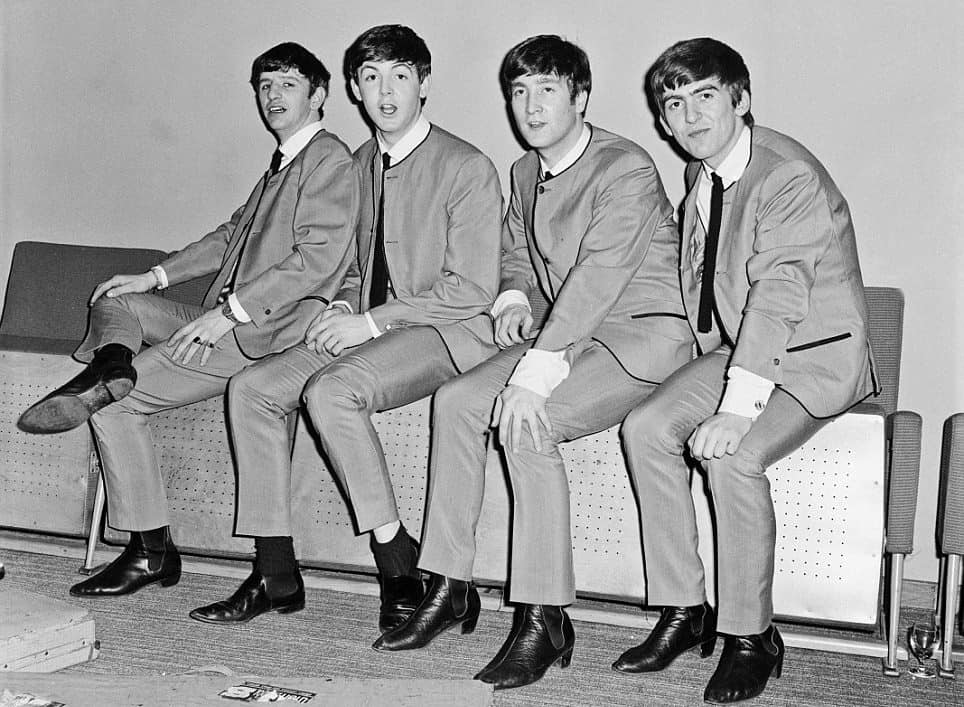
When you listen to many of the hits from the period between 1960 and 1963, it is difficult to tell whether you are listening to a black or white artist. Both with regard to sound and style, the differences between Motown and Phil Spector, for example, were small at first. At the end of 1963, Billboard even combined the segregated lists because there was so little difference between them. However, barely 14 months later, the R&B list was revived because black people had simply ceased to buy records made by white artists.
In his article “The Cultural Meaning of the Kennedys,” Steven Stark describes the Kennedys as “Hollywood.” In their apparent preference for style over substance, they paved the way for an actor like Ronald Reagan to become president. According to Stark, Kennedy had more in common with Elvis than with Franklin D. Roosevelt, and some of the scenes during Robert Kennedy’s campaigns were reminiscent of “Beatlemania.”
Teen Idol
If President Kennedy was a sort of political pop star, then perhaps, it explains why during Kennedy’s presidency, there was no single teen idol the way there had been before — in the shape of Elvis. When he first broke through in 1955, the turnover of the record industry was $200 million annually, but by 1959, it had grown to $600 million. During the time that the Beatles were together, it grew enormously again, reaching $1.8 billion by 1971. In the period in between however, the industry practically stood still. One explanation is that during this period, the biggest teen idol was not a singer at all, but a president.
During Kennedy’s presidency, the political establishment played a role normally reserved for writers and artists: being a thorn in the side of that establishment. Perhaps, this also explains why many people regard the Kennedy years as having been so filled with happiness, like a fairy tale. The clearest expression of this is in the use of the term “Camelot” to describe his presidency. However, Lancelot — President Johnson or any other politician — could not dispel the sadness King Arthur’s death brought about: Only The Beatles, the greatest court jesters in the history of the profession could.
Chelsea Boots
The Beatles and those who followed them were responsible for more than just a new craze. Long hair combed forward and Chelsea boots became the fashion, but they also blended a number of different styles to come up with something new and brought Rock ‘n’ Roll back to America. In interviews, The Beatles made no secret of their feelings about segregation, Vietnam, and the use of drugs. All of this meant that they became the clear leaders of the counterculture.
Black Americans approached all of this in a different way than white Americans, though. They wanted to be accepted into that exact society, on which white Americans were turning their backs. For a white dropout, there was always a second chance, but if a young black person misbehaved, he could find himself in real trouble. Black artists avoided offensive behavior, and in stark contrast to white pop stars, the dress and hairstyles of black stars were very conventional. Motown even had a special school whose purpose was to prepare artists for dealing with the white establishment, not the counterculture.
White society showed little interest in them, however. The ratification of the civil rights legislation in July 1964 was an illusion in fact. On paper, black Americans were now equal, but Mississippi continued to send a segregated delegation to the Democratic Convention. If a black person moved into a nice neighborhood, the whites would move out en masse. In fact, in many ways, nothing had changed, but the white electorate felt that the issue had been dealt with and did not want to hear any more about it.
Different Heroes
While the new British stars often talked about their black influences, black people had different idols. As B.B. King said, “The blues reminds them of the kind of blacks they no longer want to be.”* White people were interested in an outdated image of black culture, while contemporary black stars were largely ignored. For example, the music magazine Rolling Stone first ran an article on Marvin Gaye in 1973, even though it had been in circulation for six years by then and had already published many stories about B.B. King and Muddy Waters.
From 1964 onward, folk music began to influence the Beatles, and others. This meant lyrics became more explicitly critical of society. Black people, by contrast, had gotten used to expressing their views in veiled terms, if at all. When they released songs such as “A Day in the Life,” The Beatles convinced the established music press to take them seriously. This sort of music was not easy to dance to though, because rhythmically, it was too complex. This was a further setback for black people; the dance floor had been a place where integration would occasionally take place. Black and white youth were growing in different directions, and while the entire country mourned Kennedy, white Americans were able to escape their sorrow in a way blacks could not.
“Beatlemania”
The Beatles started a number of trends, in which black Americans could not, or did not, want to partake. Unintentionally, they helped derail an integration process that was already running into trouble, following the anticlimax of the civil rights movement and assassination of its most important spokesman. The Beatles essentially enlarged the gap between blacks and whites in America.
*Editor’s note: The original quotation, accurately translated, could not be verified.

Leave a Reply
You must be logged in to post a comment.